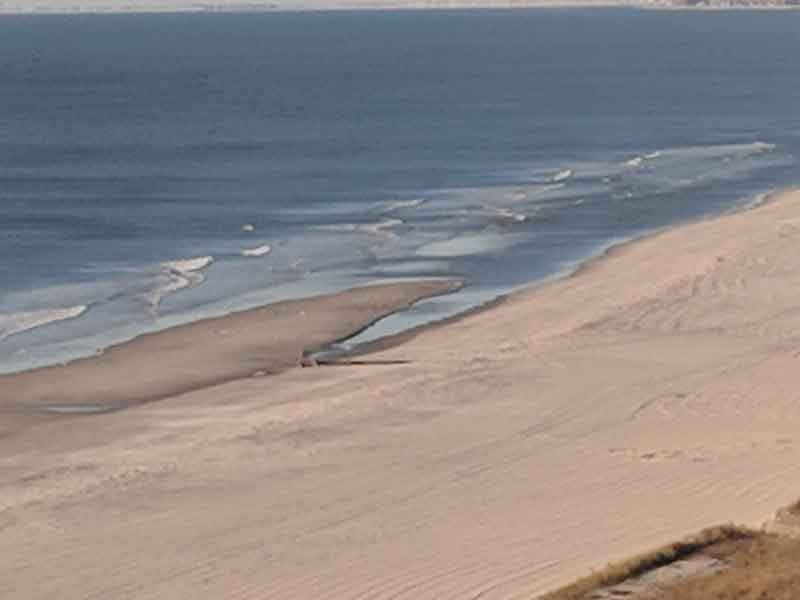
When you see something like this then you better grab your detector asap!! That’s because you will more than likely find something really good out there.
This is what we call a cut. Basically it is formed by waves or currents that wash away the sand in various ways. In the above example we can see that a lot of sand has been removed and it is clearly obvious but there has been erosion. But sometimes that’s not always very clear and usually you need to start walking or scouting the areas in order to find various low spots.
In order to find good targets or treasure when metal detecting, you need to start looking for these areas they have formed from either a storm or some other event that has washed away sand. In many cases there isn’t a cut out there, there’s just a lot of fluffy sand to walk through. So generally and most of the time when you’re out detecting you’re just scanning the areas for what we call “fresh drops”. These are targets left behind recently by individuals that frequent the beach or other areas. But over time, targets that are not found will tend to sink deeper and out of reach of your detector. So when you get events like this where the sand is washed away down to rocky areas, this is where the heavier targets are going to be found. Targets like rings coins and other valuables.

Now generally speaking you’re not gonna find major erosion like the top picture but you may find washouts or areas that are lower than others. These are the spots you wanna focus on. You may find small rocks, pebbles, shells or other things indicating were these washouts are. Once you find an area like this or is dipping down, start gridding the area to see if there’s any heavy targets. Remember even a heavy piece of iron or other similar target being found could be a good sign. This is because coins and rings and other jewelry fall in that same area with heavier targets. If you start finding crusty coins, mainly coins that have been sitting around for awhile then it’s best to scan that area completely because you may find more valuables around as well.

Sometimes these cuts or not even visible and they’re out in the water. If you have a waterproof detector, which I hope you do, then going into the water is the next best thing because a lot of cuts and low spots are in the water and not just on the beach. These areas generally cannot be found unless you start detecting in the water. But you may find some clues outside of the shoreline by looking for thrown up rocks in shells and watching the waves where they break. If the waves are breaking early and not close to shore the more than likely it’s fairly shallow out there. If the waves are breaking right at the shoreline, it may be worth your while to investigate and see if there’s any low spots out there. When you start digging up rocks in the water, this is also a good sign because rocks are heavy targets too so there could be more treasure to be found within these areas.
Finding a cut is not always easy, sometimes it’s rare for them to happen. You may spend days, weeks, months and walk for miles before you find a good cut. If you’re digging tons of light targets like aluminum or pull tabs, the more than likely you’re not gonna find much so it’s best to keep moving and scanning your areas. Either way, it’s good to be aware of your surroundings, try to pick up on the common areas that people congregate in, stick with low tides if you have them and more than likely you’ll find something good.